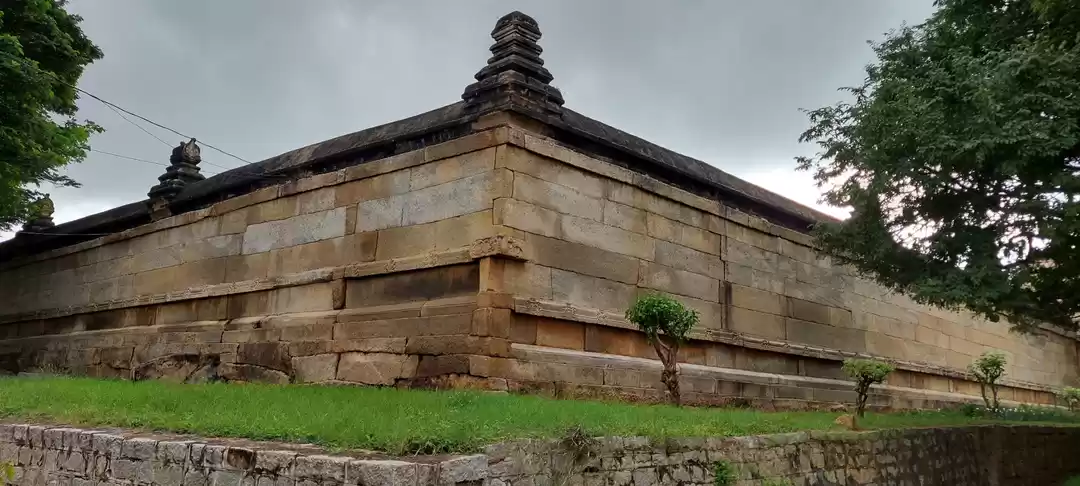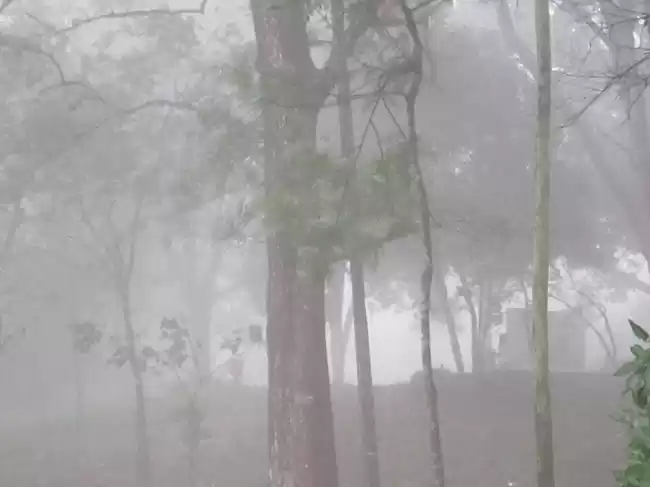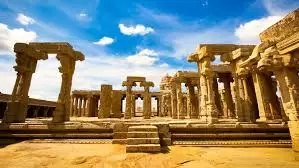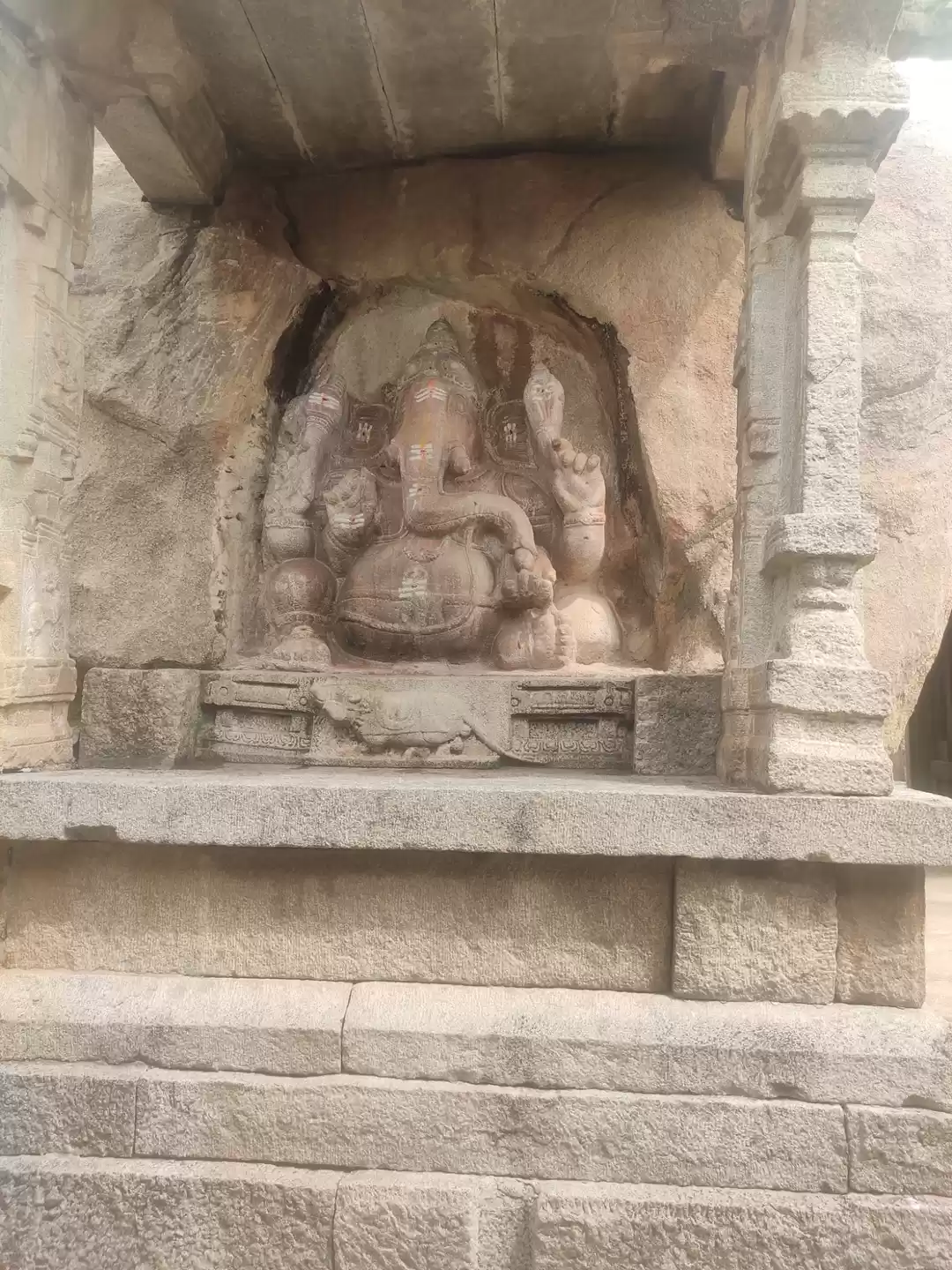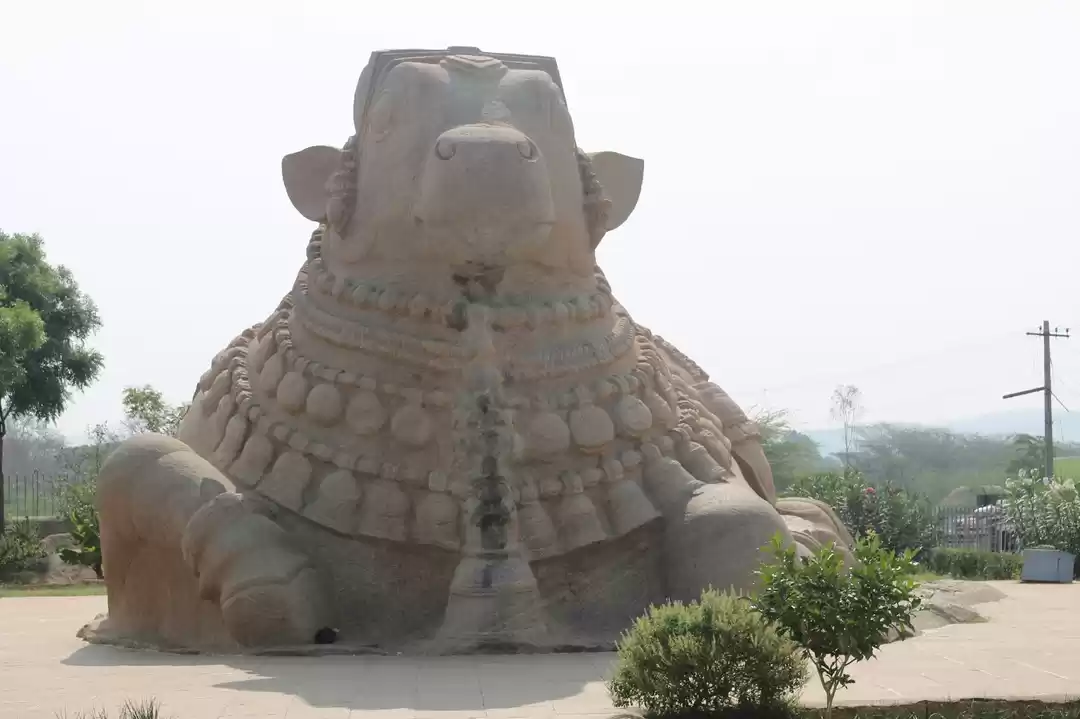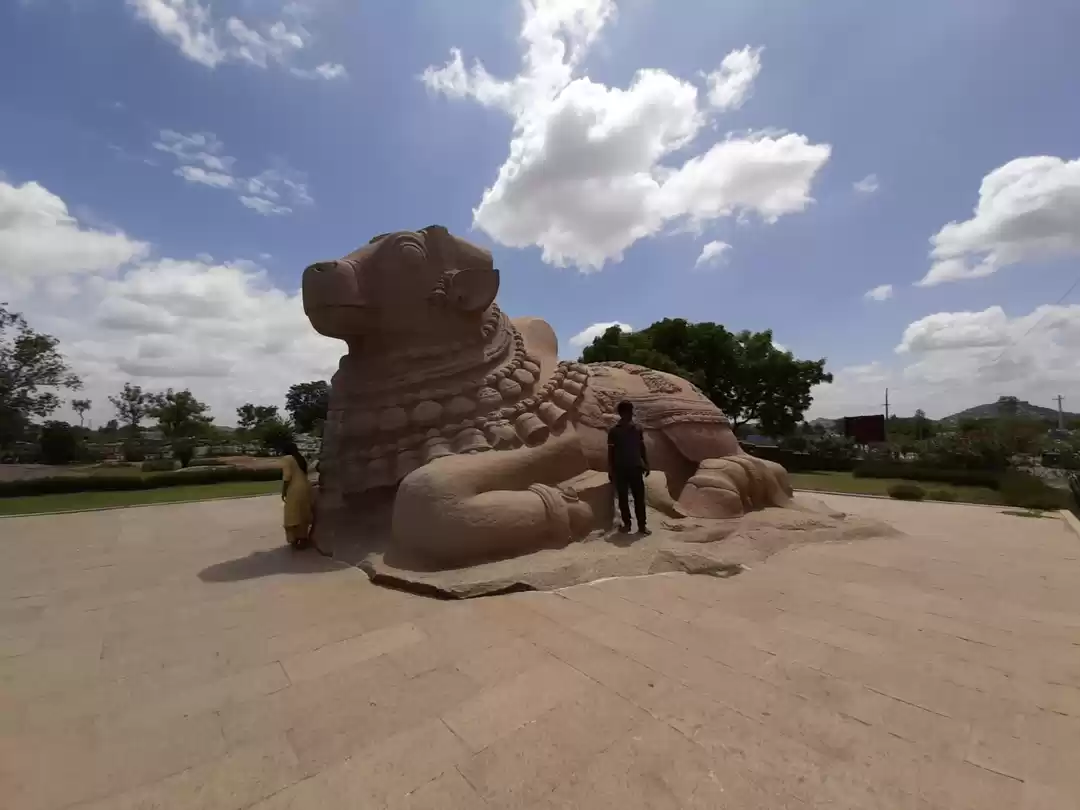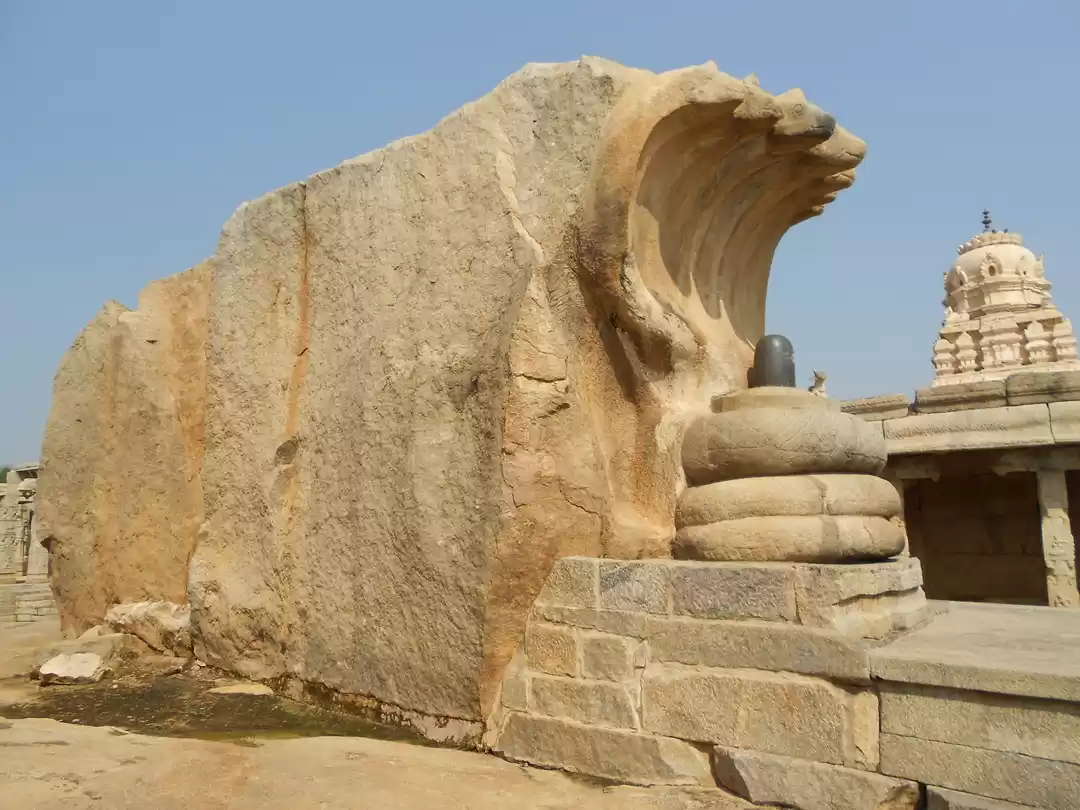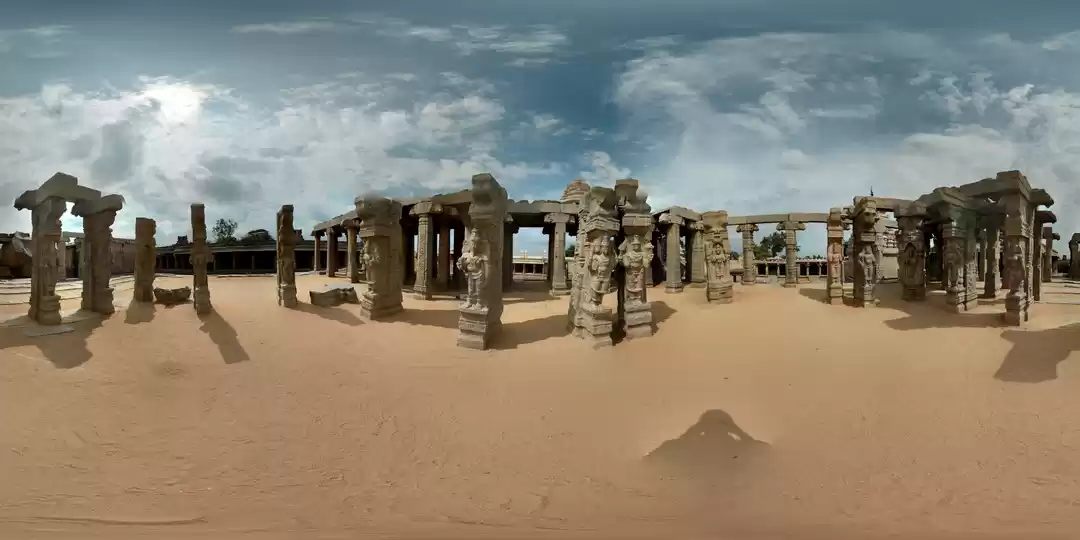Did you know that there is a temple in India that has a pillar that defies gravity? Or that there is a temple that has a footprint of a goddess that is believed to be bleeding till date? Or that there is a temple that has a sculpture of a snake that was carved out of a single stone in just one hour? If you are intrigued by these facts, then you should definitely visit the Lepakshi Temple, a marvel of history, art, and mythology.
Lepakshi Temple is a 16th-century temple located in the Anantapur district of Andhra Pradesh, India. It is dedicated to Lord Veerabhadra, a fierce form of Lord Shiva, who is worshipped as the protector of the devotees. The temple is also known for its exquisite architecture, rich history, and fascinating legends. It is one of the finest examples of the Vijayanagara style of art, which is characterized by intricate carvings, vibrant paintings, and majestic structures.
In this article, we will explore the various aspects of the Lepakshi Temple, such as its attractions, timings, poojas, dress code, directions, accommodation, food, and nearby places. We will also learn about the stories and secrets behind this amazing temple, and why it is a must-visit destination for anyone who loves culture, heritage, and spirituality.
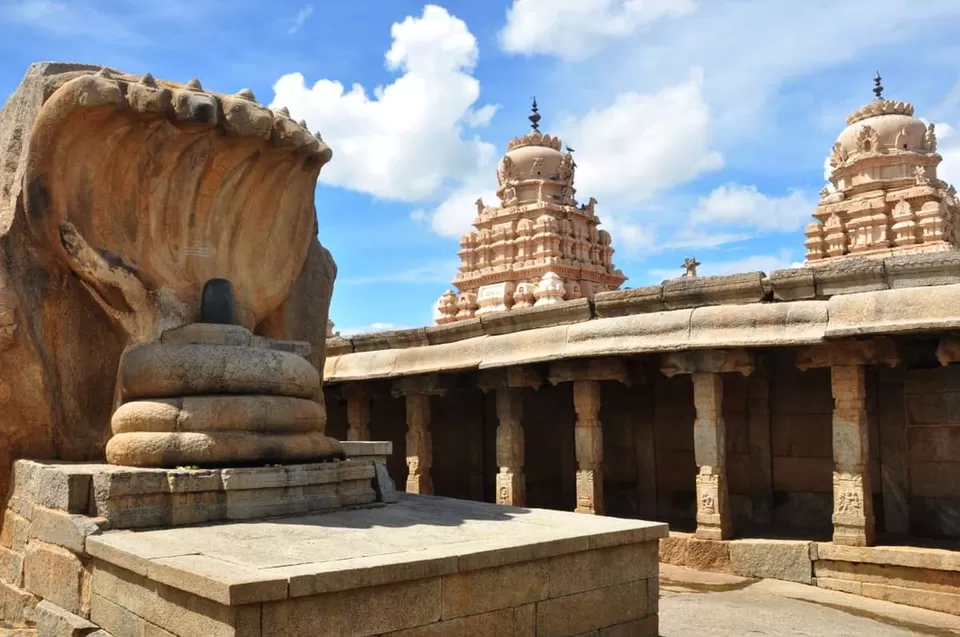
Attractions of Lepakshi Temple
Lepakshi Temple is a treasure trove of attractions that will leave you spellbound by their beauty, craftsmanship, and symbolism. Here are some of the main attractions of the temple that you should not miss:
Veerabhadra idol: The main deity of the temple is Lord Veerabhadra, who is depicted as a fierce warrior with four arms, holding weapons and a skull. The idol is made of black stone and is about 12 feet tall. The idol is adorned with jewels and flowers, and has a serene expression on its face. The idol is said to be very powerful and grants the wishes of the devotees who pray to it with faith and devotion.
Nagalinga: One of the most striking features of the temple is the Nagalinga, which is a huge sculpture of a snake with three coils and seven hoods, covering a Shivalinga. The Nagalinga is carved out of a single stone and is about 27 feet high. The legend behind the Nagalinga is that it was sculpted by two brothers, Viranna and Virupanna, who were the chief architects of the temple. They carved the Nagalinga while their mother was preparing lunch, and finished it in just one hour. The Nagalinga is a symbol of the cosmic energy and the union of Shiva and Shakti.
Nandi: Another remarkable attraction of the temple is the Nandi, which is a colossal statue of a bull, the vehicle of Lord Shiva. The Nandi is made of granite and is about 15 feet high and 27 feet long. It is one of the largest Nandi statues in India, and is situated about 200 meters away from the main temple. The Nandi is facing the Shivalinga and the Nagalinga, and is believed to be listening to the music and chants emanating from the temple.
Hanging pillar: One of the most mysterious attractions of the temple is the hanging pillar, which is a pillar that does not touch the ground and hangs in the air. The pillar is one of the 70 pillars that support the Mukha Mandapa, which is the hall where the devotees gather to worship the idols. The pillar is made of stone and is decorated with carvings of gods and goddesses. The legend behind the hanging pillar is that it was dislodged by a British engineer who tried to find out the secret behind its suspension. However, he could not figure out the mechanism and left the pillar hanging. The hanging pillar is a testament to the engineering skills and the scientific knowledge of the ancient builders.
Mural paintings: One of the most beautiful attractions of the temple is the mural paintings, which are the paintings that cover the walls and ceilings of the temple. The paintings depict scenes from the Hindu epics, such as the Ramayana, the Mahabharata, and the Puranas. The paintings are done in the fresco technique, which is a method of painting on wet plaster. The paintings are vibrant, detailed, and expressive, and showcase the artistic talent and the religious fervor of the painters.
Sita’s footprint: One of the most intriguing attractions of the temple is the Sita’s footprint, which is a footprint of Goddess Sita, the wife of Lord Rama. The footprint is imprinted on the rock floor of the temple, and is about 9 inches long and 6 inches wide. The footprint is believed to be bleeding till date, and is filled with water and vermillion. The legend behind the Sita’s footprint is that it was created when Sita was abducted by the demon king Ravana, and she dropped her toe ring on the ground. The footprint is a symbol of the devotion and the purity of Sita, and is revered by the devotees.
Incomplete Kalyan Mandapa: One of the most curious attractions of the temple is the incomplete Kalyan Mandapa, which is a pavilion where the marriage ceremony of Lord Shiva and Goddess Parvati was supposed to take place. The Kalyan Mandapa is a circular structure with 38 pillars and a dome. The pillars are carved with scenes of the wedding, and the dome is decorated with lotus motifs. The Kalyan Mandapa is incomplete because it was abandoned by the builders due to a false accusation of corruption. The legend behind the incomplete Kalyan Mandapa is that Viranna and Virupanna, the chief architects of the temple, used the treasury funds to build the temple without the permission of the king. When the king came to know about this, he ordered to blind them. However, before the king’s men could reach them, they blinded themselves by throwing their eyes on the walls of the temple, which are still stained with blood. The Kalyan Mandapa is a symbol of the sacrifice and the dedication of the architects, and is a reminder of the unfinished dream of the temple.
Timings and Poojas of Lepakshi Temple
Lepakshi Temple is open for darshan and poojas from 6:00 AM to 6:00 PM on all days of the week. However, the timings may vary on special occasions and festivals, such as Shivaratri, Ugadi, and Kartika Purnima. The temple also remains closed during solar and lunar eclipses.
The temple performs various poojas and rituals for the Shivalinga and the Veerabhadra idol, such as Abhishekam, Archana, Aarti, and Prasadam. The devotees can participate in these poojas by paying a nominal fee, and receive the blessings of the deities. The poojas are believed to grant the devotees peace, prosperity, health, and happiness.
The temple has a dress code and an etiquette for the visitors, who are expected to follow them with respect and reverence. The dress code requires the visitors to wear decent and modest clothes, and avoid shorts, skirts, sleeveless tops, and leather items. The etiquette requires the visitors to remove their shoes, wash their hands and feet, and maintain silence and cleanliness in the temple premises. The visitors are also not allowed to touch the idols, take photographs, or offer flowers or fruits to the deities.
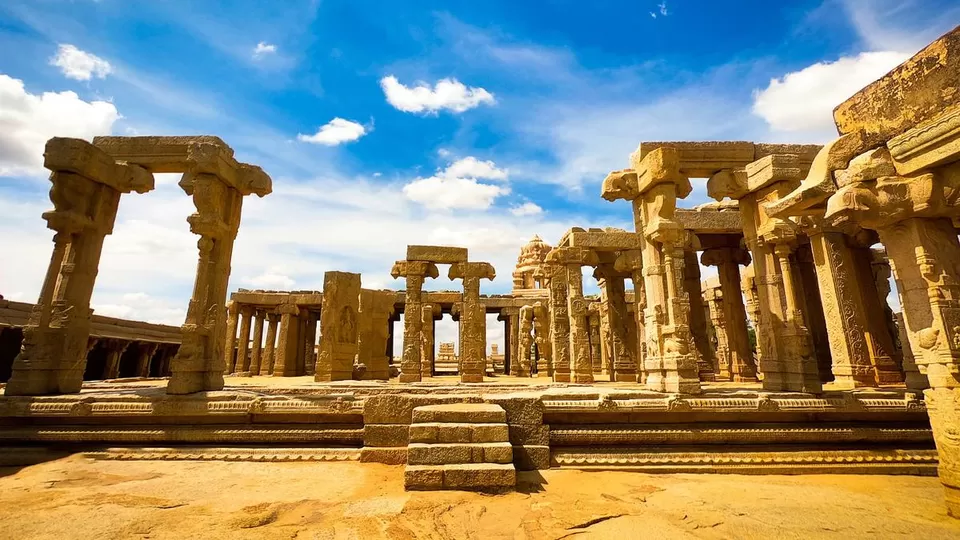
How to Reach Lepakshi Temple
Lepakshi Temple is easily accessible by different modes of transport, such as air, rail, and road. Here are some of the ways to reach the temple:
By air: The nearest airport to the temple is the Kempegowda International Airport in Bangalore, which is about 120 km away. From the airport, one can take a taxi or a bus to reach the temple.
By rail: The nearest railway station to the temple is the Hindupur Railway Station, which is about 12 km away. From the station, one can take a taxi or an auto-rickshaw to reach the temple.
By road: The temple is well-connected by road to various cities and towns in Andhra Pradesh and Karnataka, such as Anantapur, Bangalore, Hyderabad, and Tirupati. One can take a private car, a taxi, or a bus to reach the temple.
Some of the tips and suggestions for traveling to the temple are:
- Plan your trip in advance and book your tickets and accommodation accordingly.
- Carry enough cash, water, and snacks, as there are limited options for ATMs, shops, and restaurants near the temple.
- Wear comfortable clothes and shoes, and carry an umbrella or a hat, as the weather can be hot and humid.
- Respect the local culture and customs, and avoid any offensive or inappropriate behavior.
Where to Stay and Eat Near Lepakshi Temple
Lepakshi Temple does not have many options for accommodation and food near it, as it is located in a remote and rural area. However, there are some hotels and guest houses near the temple that offer basic facilities and services, such as:
Hotel Lepakshi: This is a budget hotel located about 1 km away from the temple. It has 10 rooms with attached bathrooms, Hotel Lepakshi: This is a budget hotel located about 1 km away from the temple. It has 10 rooms with attached bathrooms, TV, and Wi-Fi. It also has a restaurant that serves vegetarian and non-vegetarian food. The hotel charges Rs. 500 per night for a double room.
AP Tourism Haritha Hotel: This is a government-run hotel located about 2 km away from the temple. It has 12 rooms with attached bathrooms, AC, and TV. It also has a restaurant that serves vegetarian and non-vegetarian food. The hotel charges Rs. 1000 per night for a double room.
Sri Lakshmi Guest House: This is a guest house located about 3 km away from the temple. It has 8 rooms with attached bathrooms, fan, and TV. It also has a kitchen where you can cook your own food. The guest house charges Rs. 300 per night for a double room.
There are also some restaurants and eateries near the temple that offer local and regional cuisine, such as:
Lepakshi Restaurant: This is a restaurant located near the temple entrance. It serves vegetarian and non-vegetarian food, such as rice, roti, curry, biryani, and sweets. The restaurant is open from 7:00 AM to 9:00 PM and charges Rs. 100 per person.
Sri Rama Tiffin Center: This is a tiffin center located near the temple exit. It serves vegetarian breakfast and snacks, such as idli, dosa, vada, upma, and coffee. The tiffin center is open from 6:00 AM to 11:00 AM and charges Rs. 50 per person.
Sri Venkateswara Canteen: This is a canteen located inside the temple premises. It serves vegetarian lunch and dinner, such as rice, sambar, rasam, curd, and pickle. The canteen is open from 12:00 PM to 2:00 PM and from 7:00 PM to 9:00 PM and charges Rs. 30 per person.
What Else to See Around Lepakshi Temple
Lepakshi Temple is not only a destination in itself, but also a gateway to explore some other places of interest around it, such as:
Nandi Hills: This is a hill station located about 60 km away from the temple. It is famous for its scenic views, pleasant weather, and historical monuments. It is also a popular spot for trekking, cycling, and paragliding. You can visit the Nandi Hills from 6:00 AM to 6:00 PM and pay Rs. 10 as the entry fee. You can also stay at the Nandi Hills Resort, which offers cottages, tents, and dormitories.
Puttaparthi: This is a town located about 70 km away from the temple. It is famous for being the birthplace and the headquarters of Sri Sathya Sai Baba, a spiritual leader and a philanthropist. You can visit the Prasanthi Nilayam, which is the ashram and the residence of Sai Baba, and see his samadhi, museum, and hospital. You can also participate in the bhajans, darshans, and sevas that are conducted at the ashram. You can visit the Prasanthi Nilayam from 4:00 AM to 9:00 PM and pay no entry fee. You can also stay at the Sai Heritage Village, which offers cottages, rooms, and dormitories.
Hampi: This is a UNESCO World Heritage Site located about 200 km away from the temple. It is famous for being the capital of the Vijayanagara Empire, which ruled over South India from the 14th to the 16th century. You can visit the Hampi ruins, which are the remains of the palaces, temples, markets, and monuments that once adorned the city. You can also see the Hampi Bazaar, the Virupaksha Temple, the Vittala Temple, the Lotus Mahal, and the Elephant Stables. You can visit the Hampi ruins from 8:00 AM to 6:00 PM and pay Rs. 40 as the entry fee. You can also stay at the Hampi Heritage Resort, which offers cottages, rooms, and tents.
Conclusion
Lepakshi Temple is a marvel of history, art, and mythology that will enchant you with its charm, elegance, and mystery. It is a place where you can witness the glory of the Vijayanagara Empire, the devotion of Lord Shiva’s followers, and the magic of the ancient legends. It is a place where you can experience the culture, heritage, and spirituality of India.
If you are looking for a unique and unforgettable destination for your next trip, then you should definitely visit the Lepakshi Temple. You can book your tickets and accommodation with Tripoto, which is the best online platform for planning and booking your travel. Tripoto offers you the best deals, the best reviews, and the best guides for your travel. You can also share your travel stories and photos with Tripoto, and inspire other travelers like you.
So, what are you waiting for? Book your trip to Lepakshi Temple with Tripoto today, and get ready to explore the marvel of history, art, and mythology. You can also comment below and let us know your feedback and suggestions for this article. We would love to hear from you. Thank you for reading and happy traveling!























